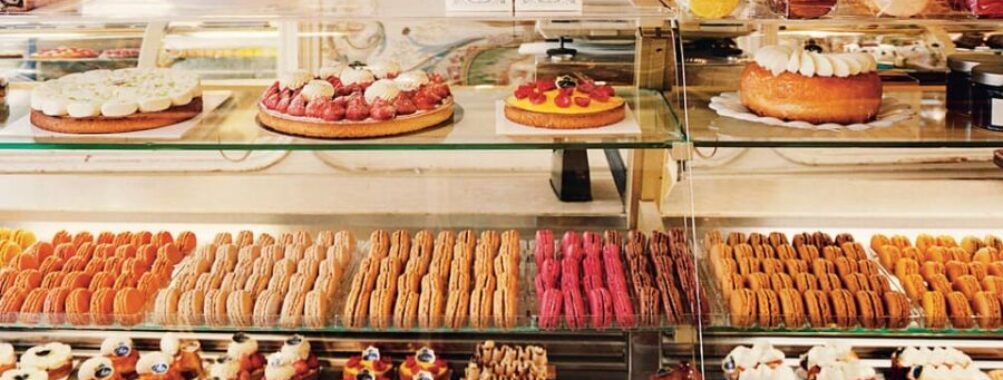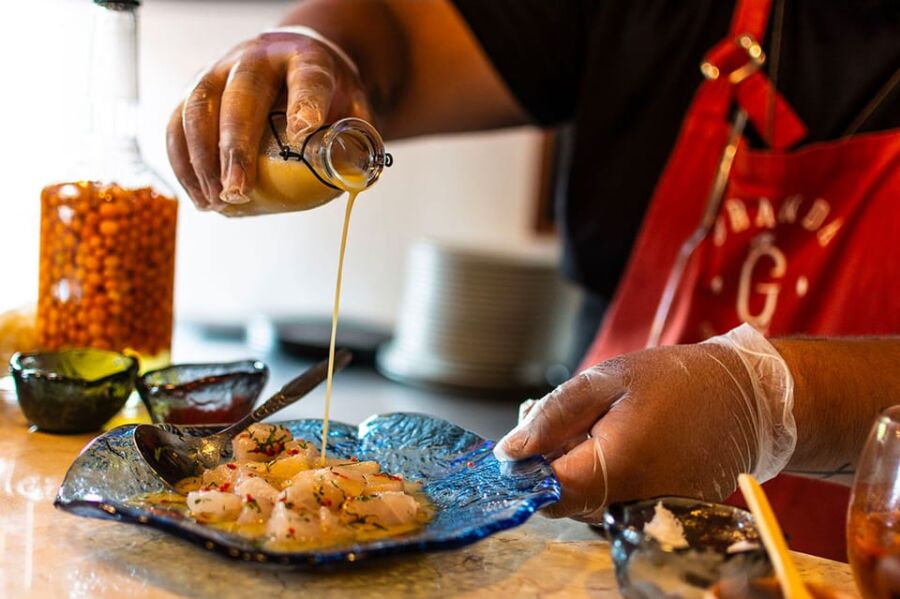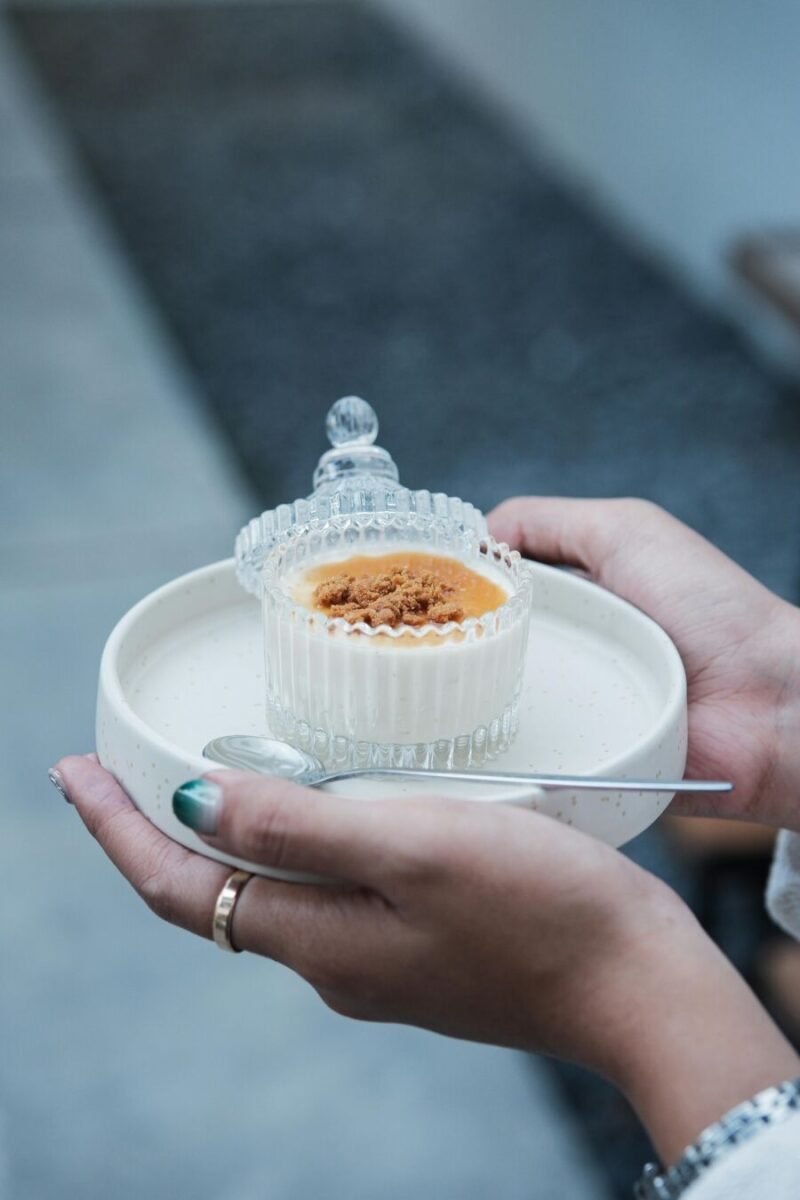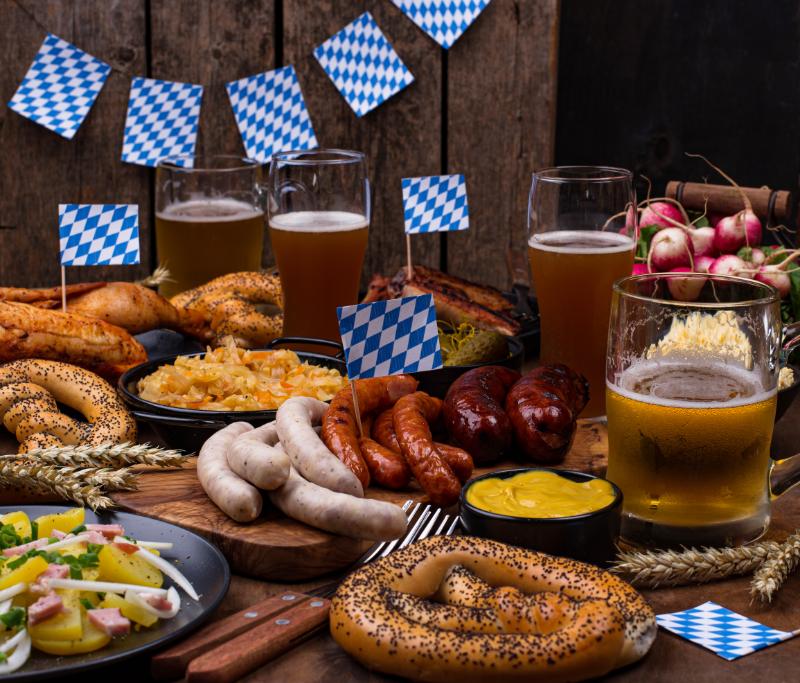
French Cuisine: 5 Classic Dishes You Must Try Today
French cuisine is more than just fancy food. It’s a way of life that brings people together. From crusty baguettes to creamy cheeses, French dishes celebrate simple ingredients in delicious ways. French cooking techniques like sautéing and braising turn everyday meals into something special.
You don’t need to be in Paris to enjoy French food. Many cities have great French restaurants that capture the flavors of France. In Columbus, Ohio, spots like Chouette and La Chatelaine serve up tasty French fare. These places let you experience a bit of France without leaving town.
French food isn’t just about fancy restaurants. It’s also about casual bistros, street crepes, and home cooking. Learning some basic French recipes can add flair to your own kitchen. With a few key ingredients and techniques, you can bring the magic of French cuisine into your daily life.
Contents
- Key Takeaways
- History of French Gastronomy
- Influential French Chefs
- Evolution of Culinary Techniques
- Key Ingredients and Flavors
- French Cheeses and Dairy
- Produce and Herbs
- Meats and Charcuterie
- French Cooking Techniques
- Mother Sauces and Seasonings
- Baking and Pastries
- Poaching and Sautéing
- Iconic French Dishes
- Starters and Appetizers
- Hearty Main Courses
- Desserts and Sweets
- Regional Specialties and Wine Pairing
- Wines of France
- Local Delicacies
- Modern French Cuisine
- Innovative Chefs and Restaurants
- Fusion and Global Influences
- Frequently Asked Questions
- What are some classic dishes to try for an introduction to French cuisine?
- How does the history of French cuisine influence its modern forms?
- Could you list some main dishes that are considered staples in French meals?
- What would a typical French menu include from appetizers to desserts?
- Which French foods are most beloved both in France and internationally?
- What to expect when visiting a traditional French cuisine restaurant?
- More Travel Guides
Key Takeaways
- French cuisine celebrates simple ingredients and cooking techniques
- Many cities offer authentic French dining experiences
- Basic French cooking skills can enhance home-cooked meals
History of French Gastronomy
French cooking has changed a lot over the years. Chefs and cooking methods have shaped what we now know as French cuisine. Let’s look at some key figures and techniques that made French food famous.
Influential French Chefs

François Pierre La Varenne was a big deal in the 1600s. He wrote “Le Cuisinier François,” one of the first French cookbooks. It taught people how to make fancy sauces and use new ingredients. La Varenne helped make French cooking its own thing, separate from Italian food.
Marie-Antoine Carême came along later and took things up a notch. He was known as the “King of Chefs and Chef of Kings.” Carême made cooking an art form. He created fancy dishes for royalty and rich folks. His work laid the groundwork for haute cuisine, which is super fancy French food.
Evolution of Culinary Techniques
French cooking techniques have come a long way. In the old days, people in the countryside cooked simple meals with what they had on hand. They’d use herbs from their gardens and meat from local farms.
As time went on, chefs got more creative. They started using new ways to prepare food. Sauces became a big deal in French cooking. Chefs learned to make stocks and reductions to add flavor. They also started paying more attention to how food looked on the plate.
Haute cuisine brought even more changes. Chefs began using fancier ingredients and more complex cooking methods. They’d spend hours making elaborate dishes with many steps. This style of cooking is still a big part of French food culture today.
Key Ingredients and Flavors

French cuisine is all about using high-quality ingredients and combining them in ways that create amazing flavors. Let’s explore some of the key components that make French food so special.
French Cheeses and Dairy
You can’t talk about French cooking without mentioning cheese! France is famous for its huge variety of cheeses. From creamy Brie to tangy Roquefort, there’s a cheese for every taste.
Some popular French cheeses you might want to try:
- Camembert: Soft and earthy
- Comté: Hard and nutty
- Chèvre: Tangy goat cheese
Butter is another dairy staple in French kitchens. French butter is often cultured, giving it a richer flavor than regular butter. It’s perfect for making flaky croissants or adding depth to sauces.
Don’t forget about crème fraîche! This slightly tangy, thickened cream is great for both sweet and savory dishes. Try it on berries or use it to make a silky sauce for meat.
Produce and Herbs
Fresh, seasonal produce is key in French cooking. You’ll find lots of vegetables like leeks, mushrooms, and green beans in classic French dishes.
Some must-have herbs for your French pantry:
- Tarragon
- Thyme
- Parsley
- Chives
These herbs add a burst of flavor to everything from omelets to roast chicken. French cooks often tie herbs together in a bundle called a “bouquet garni” to flavor soups and stews.
Garlic and shallots are also super important. They form the base of many French dishes, adding depth and aroma. And let’s not forget about truffles! These fancy fungi are prized for their intense, earthy flavor.
Meats and Charcuterie
French cuisine loves its meats, especially when it comes to charcuterie. This category includes cured meats, pâtés, and terrines. Some popular options:
- Jambon de Bayonne: Dry-cured ham
- Saucisson sec: Dry-cured sausage
- Pâté de campagne: Country-style pâté
Beef, chicken, and duck are common in French main dishes. You might try classics like coq au vin (chicken in wine sauce) or boeuf bourguignon (beef stew).
Fish and seafood are big in coastal regions. Think buttery sole meunière or a classic bouillabaisse fish stew.
Don’t forget about snails! While not an everyday food, escargot in garlic butter is a famous French delicacy. Give it a try if you’re feeling adventurous!
French Cooking Techniques

French cuisine is famous for its sophisticated techniques that bring out amazing flavors. Let’s explore some key methods that make French cooking so special.
Mother Sauces and Seasonings
French cooking relies heavily on sauces to add depth and richness. The five “mother sauces” are the foundation of French cuisine. Béchamel is a creamy white sauce made from milk and a roux (butter and flour). Velouté is similar but uses light stock instead of milk. Espagnole is a rich brown sauce. Hollandaise is a buttery, lemony sauce perfect for eggs or veggies. Tomato sauce rounds out the group.
Herbs and spices play a big role too. You’ll often see parsley, thyme, and tarragon in French dishes. Garlic and shallots add savory notes. And don’t forget about wine – it’s used in cooking as much as drinking!
Baking and Pastries
French pastries are world-famous for good reason. The secret is in the technique. You’ll need to master skills like folding dough to create those flaky, buttery layers in croissants and puff pastry.
For the perfect baguette, you’ll knead the dough just right and let it rise slowly. This creates that crispy crust and chewy inside. French cakes often use separated eggs – the whites whipped to soft peaks for a light, airy texture.
Don’t forget about tarts! A good pastry crust is key. You’ll blind bake it (pre-bake without filling) for fruit tarts to keep it crisp.
Poaching and Sautéing
Poaching is a gentle cooking method that’s perfect for delicate foods. You’ll simmer ingredients in liquid just below boiling. It’s great for eggs, fish, and chicken. The French often poach in wine or stock for extra flavor.
Sautéing is all about high heat and quick cooking. You’ll use a bit of oil or butter in a hot pan. It’s ideal for veggies, meat, and seafood. The key is not to overcrowd the pan – this lets foods brown nicely instead of steaming.
Both methods help preserve the natural flavors of ingredients. They’re healthier options too, since they don’t need much added fat.
Iconic French Dishes

French cuisine is renowned for its delectable dishes that have become famous worldwide. From appetizers to desserts, these culinary creations showcase the rich flavors and techniques of French cooking.
Starters and Appetizers
Let’s kick things off with some mouthwatering starters! Have you ever tried escargot? These tender snails cooked in garlic butter are a true French delicacy. If you’re feeling adventurous, give them a go!
Another classic appetizer is French onion soup. This warm and comforting dish features caramelized onions in a savory broth, topped with crusty bread and melted cheese. It’s perfect for chilly days.
For a lighter option, why not sample a quiche Lorraine? This savory tart filled with eggs, cream, bacon, and cheese is a crowd-pleaser. It’s great for brunches or as a light lunch with a side salad.
Hearty Main Courses
When it comes to main courses, French cuisine really shines. Boeuf Bourguignon is a must-try dish. This hearty beef stew is slow-cooked in red wine with mushrooms and pearl onions. It’s rich, flavorful, and oh-so-satisfying.
Coq au vin is another classic. This rustic dish features chicken braised in wine with bacon and mushrooms. It’s comfort food at its finest!
For seafood lovers, bouillabaisse is a treat. This fish stew from Marseille is packed with various types of fish and shellfish in a flavorful broth. It’s often served with crusty bread and rouille, a spicy mayonnaise.
Don’t forget about ratatouille, a colorful vegetable dish that’s both healthy and delicious. It’s a great option for vegetarians or as a side dish.
Desserts and Sweets
No French meal is complete without dessert! Crème brûlée is a classic choice. This creamy custard topped with caramelized sugar is simply irresistible.
For a fruity treat, try tarte tatin. This upside-down apple tart is buttery, caramelized, and absolutely delicious. It’s often served warm with a scoop of vanilla ice cream.
If you’re a chocolate lover, you can’t go wrong with a chocolate soufflé. This light and airy dessert is a true test of a chef’s skill. When done right, it’s pure chocolate heaven!
Regional Specialties and Wine Pairing

France is famous for its amazing food and wine. Each region has its own special dishes and wines that go perfectly together. Let’s explore some of these tasty combos!
Wines of France
You’ll find incredible wines all over France. In Burgundy, try a glass of rich Chardonnay with some creamy chicken in mushroom sauce. It’s heavenly! If you’re in Bordeaux, pair a bold red with a juicy steak. Yum!
Don’t forget about bubbly Champagne. It’s great with fancy appetizers or as a treat on its own. And in the Loire Valley, crisp Sauvignon Blanc goes so well with fresh goat cheese.
Want something stronger? Sip some Cognac after dinner. It’ll warm you right up!
Local Delicacies
Every part of France has its own yummy foods. In Brittany, you’ve got to try galettes – savory crepes filled with cheese, ham, and egg. So good!
Head to the Alps for comfort food like tartiflette and raclette. These cheesy potato dishes are perfect after a day of skiing.
In the southwest, poulet basquaise (Basque-style chicken) is a must-try. And don’t miss salade landaise, a tasty salad with duck.
All over France, you’ll find amazing charcuterie boards. Load up a plate with cured meats, pâtés, and local cheeses. It’s the best way to sample lots of French flavors at once!
Modern French Cuisine
French cooking has come a long way from the heavy sauces and strict rules of the past. Today’s chefs are shaking things up with fresh ideas and global flavors while still honoring French traditions.
Innovative Chefs and Restaurants

French kitchens are buzzing with creativity these days. Chefs are trying new things and putting their own spin on classic dishes. You’ll find lighter sauces and more veggies on the menu. Many restaurants focus on using local, seasonal ingredients to make their food taste even better.
Some top chefs are even ditching fancy dining rooms for more casual spots. They want everyone to enjoy great French food, not just rich folks. You might see things like gourmet burgers or fancy street food alongside traditional French fare.
Presentation is another area where modern chefs shine. Your plate might look like a work of art, with colorful ingredients arranged just so.
Fusion and Global Influences
French cuisine isn’t stuck in its own bubble anymore. Chefs are borrowing flavors and techniques from all over the world. You might find sushi-inspired dishes or curry-spiced sauces in a French restaurant now.
This mix of cultures brings exciting new tastes to your plate. Imagine biting into a croissant filled with matcha cream or trying coq au vin with a hint of lemongrass. It’s like taking your taste buds on a world tour!
Some chefs are even bringing back old French recipes and giving them a modern twist. They might use ingredients that were popular centuries ago but add a fresh spin.
Travel has played a big part in this change. French chefs go abroad to learn new skills, then bring those ideas home to create something totally unique.
Frequently Asked Questions
French cuisine can seem intimidating, but it’s really all about great ingredients and simple techniques. Let’s explore some common questions to help you get started on your culinary journey through France.
What are some classic dishes to try for an introduction to French cuisine?
Start with coq au vin, a hearty chicken dish cooked in red wine. Beef bourguignon is another classic – it’s a rich stew that’s perfect for cold days. For something lighter, try a classic French onion soup topped with melty cheese. And don’t forget to sample some fresh baguette with butter!
How does the history of French cuisine influence its modern forms?
French cooking has deep roots going back centuries. Many dishes we love today came from peasant food, like cassoulet – a tasty bean and meat casserole. The French Revolution actually played a big role too. When fancy palace chefs lost their jobs, they opened restaurants for regular folks. That’s how haute cuisine became more accessible.
Could you list some main dishes that are considered staples in French meals?
You’ll often see roast chicken on French tables – it’s a Sunday favorite. Steak frites (steak and fries) is super popular too. Fish dishes like sole meunière are common, especially near the coast. And ratatouille, a veggie stew, is a go-to for many families.
A French meal usually starts with an appetizer like pâté or a simple salad. The main course might be something like roasted lamb or fish. Cheese comes next – it’s practically required! For dessert, you might get a fruit tart or crème brûlée. And don’t forget the bread – it’s served throughout the meal.
Which French foods are most beloved both in France and internationally?
Croissants are loved everywhere – who can resist that buttery goodness? Baguettes are another French staple that’s gone global. Quiche is super popular too, both in France and abroad. And let’s not forget about French cheeses like Brie and Camembert – they’re adored worldwide.
What to expect when visiting a traditional French cuisine restaurant?
Prepare for a relaxed, drawn-out meal. French dining is all about savoring each course. You’ll probably start with an apéritif – a light drink before the meal. The menu might be in French, so don’t be shy about asking questions. And remember, tipping isn’t expected like it is in some countries. Just sit back and enjoy the experience!



